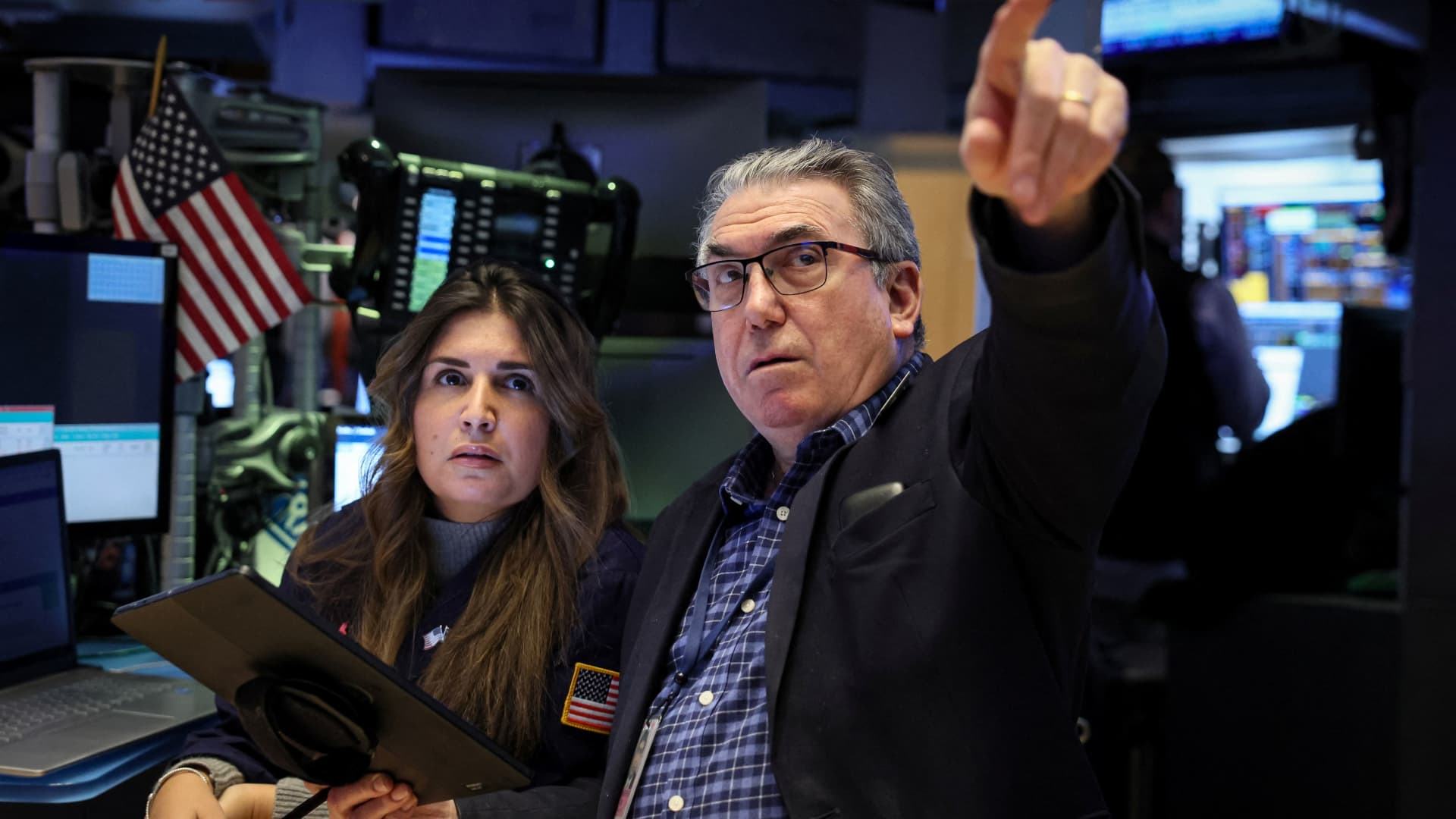Nasdaq falls more than 2% to post sixth straight losing day as Nvidia craters 10%: Live updates

Traders work on the floor at the New York Stock Exchange on Feb. 29, 2024.
Brendan McDermid | Reuters
The Nasdaq Composite fell for a sixth straight session on Friday, notching its longest losing streak in more than a year. The downtrend comes as Nvidia dived, adding to recent market woes tied to geopolitical conflicts and sticky inflation.
The tech-heavy Nasdaq pulled back 2.05% to 15,282.01, while the broad S&P 500 slipped 0.88% to 4,967.23, below the 5,000 level. Both clinched their sixth straight negative days, streaks not seen for either since October 2022.
The Dow Jones Industrial Average rose 211.02 points, or 0.56%, to finish at 37,986.40. The 30-stock index was lifted by a rally of more than 6% in American Express following earnings.
Netflix retreated more than 9% even after quarterly earnings beat on the top and bottom lines. The streamer’s subscribers jumped 16% from the previous year, but it said it would no longer report paid memberships starting in 2025.
Chip stocks were also under increasing pressure in afternoon trading, a sign that investors were rotating heavily out of the sector that led the bull market. Nvidia slipped 10%, registering its worst day since March 2020. Super Micro Computer plunged more than 23%.
While tech put downward pressure on the market, investor concerns over intensification of the Middle East conflict following Israel’s limited strike on Iran appeared largely shaken off by Friday’s open.
Oil prices briefly spiked more than 3%, but swung between more modest gains and losses in the hours since. Dow futures at one point fell more than 500 points overnight amid fears that the attack was enough to spark a broader war.
“There was a relief sigh” as investors realized Israel’s response was “muted” and designed to minimize escalation, said George Ball, chairman of Sanders Morris.
Still, “investors are very much on edge,” Ball said. “Investors are much more aware of geopolitical risks today in their decision-making than they have been for a long time.”
A tough week
Those moves come as the S&P 500 posted its worst weekly performance since March 2023 amid growing fears around the path of inflation and monetary policy.
With a loss of more than 3%, it was also the large-cap benchmark’s third straight negative week. A chunk of that downward pressure came from tech stocks, as the sector was the worst performing in the S&P 500 in both the day and week.
The S&P 500 is now more than 5% off its 52-week high, part of a market pullback that has been largely driven by tempered expectations for rate cuts amid sticky prices. Economists and strategists now see the Federal Reserve waiting until at least September to lower the cost of borrowing money.
“There are a number of cross-currents that the market is working to digest,” said Bill Northey, investment director at U.S. Bank Wealth Management. Inflation “has been a little bit more problematic than I believe the market expected, or even what the Federal Reserve expected.”
The Nasdaq Composite fell 5.5% this week. The tech-heavy index posted its fourth straight down week, its longest negative streak since December 2022. It also marked the Nasdaq’s worst weekly performance since November 2022.
With Friday’s advance, the Dow eked out a gain of 0.01% for the week. That was its first positive week of the last three.
Correction: An earlier version misstated the date when the Nasdaq Composite had its last four-week losing run. It was December 2022.





:max_bytes(150000):strip_icc():format(jpeg)/GettyImages-1296348323-44c7aca2cbb14d2f84b65b393fec649a.jpg)
:max_bytes(150000):strip_icc():format(jpeg)/GettyImages-171349083-062edb8f4c13435797d038746c27422f.jpg)
:max_bytes(150000):strip_icc():format(jpeg)/GettyImages-21669937071-728bfabe684b4c8aa17fc9c47255a740.jpg)
:max_bytes(150000):strip_icc():format(jpeg)/GettyImages-1338457868-a84a285627f64532a38b290e15fc48ea.jpg)
:max_bytes(150000):strip_icc():format(jpeg)/GettyImages-1440361960-8ba9445e90a74d6d9177d1c88bd6608b.jpg)